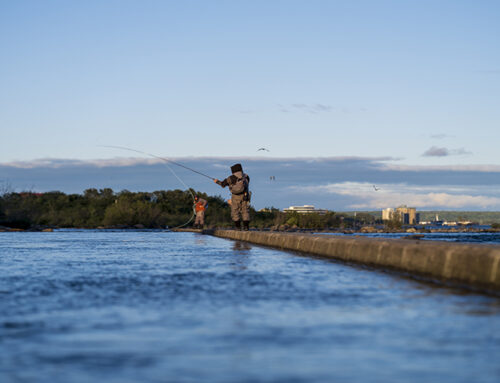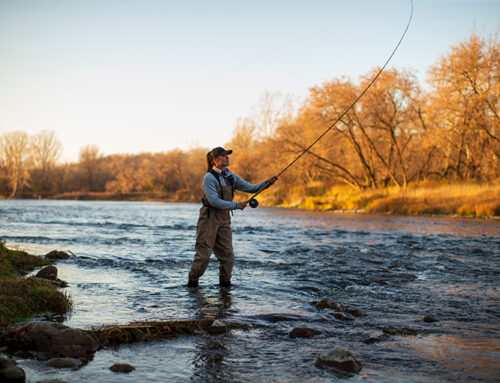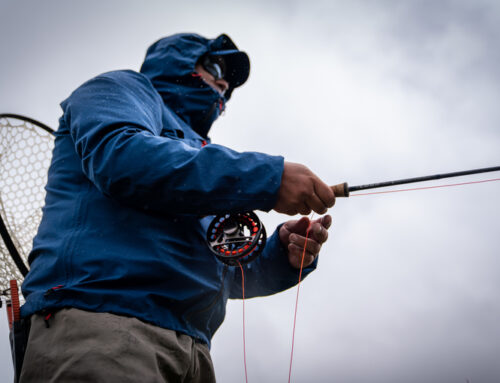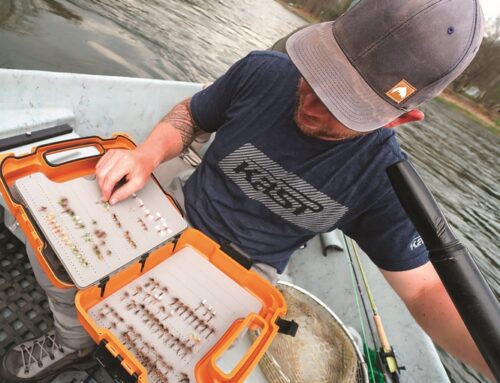
When the rain turns white and the rivers turn hard, there isn’t much opportunity for local fly fishing. But the season for fly tying has well and truly arrived.
Over the course of the past fishing season, no doubt your fly boxes have taken a hit with flies lost to fish, rocks and trees. Winter is the opportunity to replenish your boxes, research your fly needs for any planned winter fishing trips south, and perhaps take the opportunity to learn a few new techniques.
Without the pressure to quickly knock out a few flies for tomorrow’s trip, you can take your time to indulge in some fly tying creativity.
Start off by looking through your fly boxes to recall what worked best and make a note of the patterns that were productive. A flip through a few fly pattern books, videos or websites should get the creative juices flowing for new flies to try on next season’s trout. It’s also a good time to take stock of any materials that need replenishing or replacing.
Get in the mood
It can be hard to get going at the vise when there’s a blizzard hammering away at the house. If you’re having trouble getting motivated, then looking at photos or videos of past trips can get you in the mood to tie.
Remembering that gorgeous fish brought to hand on one of your flies can be just what you need as an inspirational nudge to sit down at the vise.
I know a few people who can tie gorgeous Spey flies by hand while sitting on the tailgate of a truck, parked beside a river.
Most of us, though, need a good workspace. It’s helpful if you can carve out a spot for yourselves that you can leave messy with half-finished projects in the vise. After years of continually cleaning my office, I learned my lesson and built a well-lit fly tying bench in the basement.
Having that bench always handy has made a big difference.

Some of us thrive in the midst of clutter and that’s cool, but if you want to get into some serious production, then a bit of organization and neatness helps.
If I’m planning to knock off a batch of the same pattern, I’ll prepare my materials in advance, placed in small containers and arranged in order.
It does make the process flow. I’ll also lay out just the tools I need and no more. Extraneous stuff is banished from the bench. OK, maybe an adult beverage may be allowed.
Married wings can be an intimidating procedure, but with the luxury of time, complex techniques can be mastered more easily.
Without the pressure to tie for an upcoming fishing trip, you have the opportunity to explore new techniques. As an example, married wings can be an intimidating procedure, but with the luxury of time, complex techniques can be mastered more easily.
The classic patterns still work, so don’t neglect them. One of the more satisfying fly tying projects is to go through some old books and find a favourite pattern from yesteryear. It really is a special treat to catch a wild trout on a pattern that is more than a 100 years old.
Pick a pattern
Winter fly tying can also be a launching pad into new ways to fly fish. If you have never explored the world of fishing Yorkshire wet flies before, then there’s nothing like producing a few to encourage us to try.
It’s that time of year when you can use your tying to look forward to new fishing opportunities and methods. So clear away the clutter, dust off the tools, pick a pattern and have at it. The shovelling can wait.







Leave A Comment